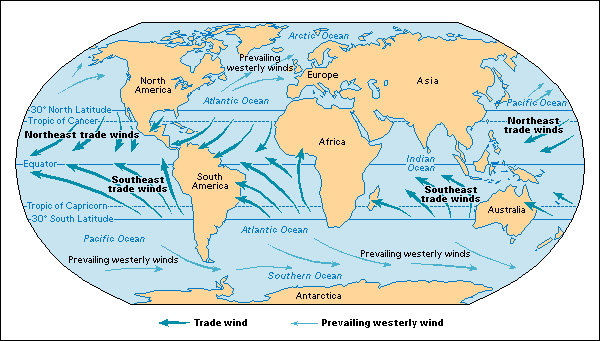Trade wind is a strong wind that blows toward the equator from the northeast or southeast. In the days of sailing ships, sailors depended greatly on trade winds. The paths of these winds were so regular, especially over the oceans, that early navigators named them trade winds, which meant course, or track, winds. The trade winds are part of a great system of winds that blow over the earth. They blow toward the equator from about the 30th parallels of north and south latitude.

Differences between the temperature in low latitudes and the temperature in the polar regions cause trade winds. The heating of the air in low latitudes makes it expand and become light. Then it rises. This creates an area of low pressure near the surface. Cooler and heavier air from higher latitudes then tends to flow in to fill the area of low pressure. These polar winds do not blow due north or due south because of the eastward whirling of the earth. Instead, these winds blow from the northeast and from the southeast.
The belt of rising air between the trade winds is a region of mild winds and calms. This region is often called the doldrums because it is so calm. Sailing ships of early days were often stranded for many weeks in the doldrums. Trade winds have a great deal to do with rainfall on land. When trade winds blow against mountain ranges, they are forced upward. As the warm air rises, it cools. Its moisture condenses and falls as rain on the mountain slopes.
